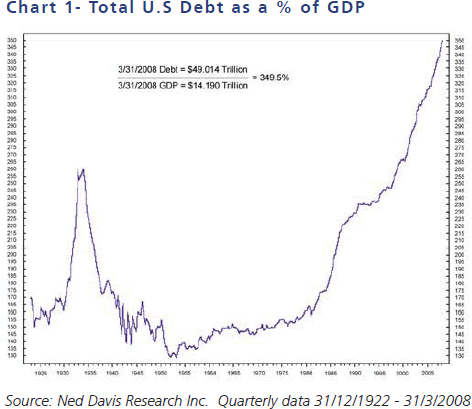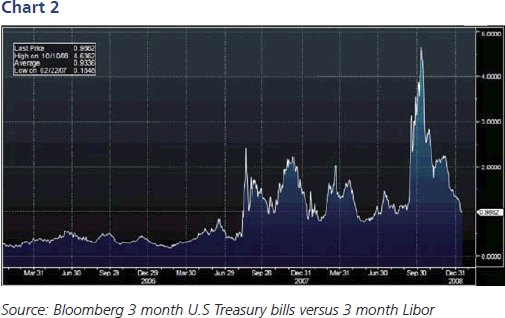[download report in PDF format]
‘There is absolutely no doubt that we are now facing a more frugal future.’
It is now clear that the global economy suffered the equivalent of a “cardiac arrest” in the fourth quarter of 2008. Fourth quarter GDP data will confirm that virtually every country in the world had a ghastly year end. In the United States we could see the publication of a number as bad as minus 6% – yes, I repeat, minus 6%. No country was immune as the world came close to a systemic financial meltdown, post the Lehman collapse on 15 September, culminating on 10 October with the effective seizure of the financial markets.
The challenge for all of us, however, is to attempt to measure the depth and duration of the current recession. In our last Pain Report for 2008 we spoke of the Mother of all Stimulations, which described the unprecedented monetary and fiscal measures being pursued by policy makers around the world. We spoke also of the central banks uniting in a fascinating race to zero. Through the second half of 2007 we wrote that after an era of unprecedented credit expansion we now face a period of credit contraction (see Chart 1).  There is absolutely no doubt that we are now facing a more frugal future. Households and companies will spend less, which means Governments will need to spend more. Private sector balance sheets will shrink and public sector balance sheets will expand. Yes, we are all Keynesians now.
There is absolutely no doubt that we are now facing a more frugal future. Households and companies will spend less, which means Governments will need to spend more. Private sector balance sheets will shrink and public sector balance sheets will expand. Yes, we are all Keynesians now.
Yes, Asia is now the undisputed locomotive of the brave new world, with the Chinese consumer’s contribution to the growth in the global economy now exceeding their shop till you drop rivals in America. These are facts not forecasts. U.S. retail sales fell 9.8% year on year (YOY) in December 2008 and Chinese retail sales grew 20.8% YOY as at November 2008. And yes, the Chinese economy is slowing fast and we put out a 2009 forecast of 6-7% for the world’s third largest economy at the end of last year. But, as we have said many times over the last 18 months, “In an age of globalisation no nation can be viewed in isolation”.
It would be ridiculous to suggest that Asia could be completely immune to the collapse in America. Decoupling never attempted to suggest that America’s demise would not have an impact upon the developing world. The decoupling thesis is about the acknowledgement that over 3 billion Asians have embarked upon the path of economic development and that the Asian economies and their consumers will be the new economic locomotive in the years and decades ahead.
The global economic train has a new locomotive and the facts supporting this assertion are there for all to see. China’s contribution to the growth in the global economy exceeded that of the U.S. in 2007 and 2008 and will do so in 2009. As we have said since 2005, America has spent too much and saved too little and Asia has saved too much and spent too little. Over the next decade these trends will reverse and bring much better balance to what has been a very unbalanced world.
The challenge I have is that I have a very clear view of the next decade, but I find this year and next incredibly confusing and complex. So let’s attempt to set out the pieces of the jigsaw puzzle that we know about and that might help us to form a picture and even find the pieces that are missing.
We are currently in the nasty negative feedback loop phase. Banks are not lending, consumers are not spending and companies are shrinking. Each of these actions reinforces the other in a negative feedback loop, which, when allowed to continue ends in an extremely destructive depression. In a classical Keynesian framework the governments need to step in and stop the rot and stimulate the return of the so called “animal spirits” of free market risk taking.
The tsunami of destructive deleveraging which intensified after the Lehman collapse very nearly led to the systemic breakdown of the financial system and  Chart 2 vividly illustrates the “armageddon” in the money markets on 10 October 2008. Since that time we have seen a thawing in the capital markets, but we continue to hear that banks are looking for the opportunity not to lend rather than lend. It therefore looks likely that, in some countries, governments will continue to nationalise the large banks and in fact take over the responsibility of lending to the private sector. The UK looks already to have embarked on this path. This is radical stuff but necessary stuff!
Chart 2 vividly illustrates the “armageddon” in the money markets on 10 October 2008. Since that time we have seen a thawing in the capital markets, but we continue to hear that banks are looking for the opportunity not to lend rather than lend. It therefore looks likely that, in some countries, governments will continue to nationalise the large banks and in fact take over the responsibility of lending to the private sector. The UK looks already to have embarked on this path. This is radical stuff but necessary stuff!
The “catch 22” of the current environment, as we mentioned last year, is that the velocity of money has collapsed. In 1911 Irving Fisher formulated the quantity theory of money and simply stated it is that MV=PT (it is an identity and hence there should be three parallel lines, but our computers can’t cope with this). We wrote about this on 24 November, in our last Pain Report. We know that M, money supply is rising, however since both P, prices, and T, volume of transactions, are declining we therefore know that the velocity of money has collapsed as investors seek safe haven in instruments such as U.S. Treasury Bills, which recently had a zero yield. In essence there is currently no “traction” between MV and PT. This is all eerily reminiscent of Japan’s liquidity trap of the nineties. So we can probably admit that much of the developed world, America and Britain in particular, is currently in a liquidity trap. Now the unfortunate thing about liquidity traps is that they are not one night wonders and tend to go on for a long time and do so until such time as the root cause is resolved.
We know that the root cause in Japan was a real estate bubble and we know that the root cause in America was both a real estate bubble and a generalised credit bubble. Both these American bubbles have burst as have the various conduits and agents of these bubbles. Hence the investment banks have gone, as has the securitisation model that took a subprime mortgage in Stockton, California and threw in a few thousand similar mortgages from Florida (and the rest of the nation) and created a mortgage-backed security, then took a whole lot of mortgage-backed securities and built a CDO, then took a CDO and built a CDO of a CDO (CDO squared), then took a CDO of a CDO of a CDO (a CDO cubed) , then got a rating agency to rate it AAA, then made sure the regulators were fast asleep and sold it to a bank in Iceland, run by an American MBA graduate who wanted to create a “global footprint” for Icelandic banks, which led to Icelandic bank assets being 11 times the size of the whole economy, which finally led the Prime Minister of this nation of only 300,000 to tell his people to go fishing!
So maybe we should step back and think about what the Icelandic Prime Minster is saying here. Let’s get back to basics. How about only spending money you have?
So back to the beginning.
If the predatory and shameful lending practices of the banks were the root cause, which in turn led to an excessive “they can never decline” rise in U.S. house prices (we have the same problem here too!), then a decline in real estate prices back to more normal levels will hopefully restore some kind of equilibrium to the global economy.
It all started in America and swept around the world like a virus. I’m not just talking about house prices, I’m talking about a way of life. I’m talking about the “whatever” just put it on the credit card mentality. Yes, we all want it all now, not tomorrow, today.
It will take many years for the brave new world to take shape. It will take many frugal years for people to shed the age of consumerism, but that is what much of the developed world faces. The economic outlook will continue to be ghastly as we have the adjustment we had to have, but American house prices are probably two thirds of the way through their decline and the sharp fall in petrol prices and interest rates will soften the pain. I continue to look for a stabilisation in the American economy in the second half of 2009. We should not be thinking of a V shaped recovery, but more of a bumping along the bottom and I don’t know which letter of the alphabet looks like that. The positive spin on all this is that after the collapse in growth in the fourth quarter last year and the first quarter this year, bumping along the bottom will feel so much better.
“Bottom up” equity analysts have finally woken up and begun to decimate their corporate earnings forecasts. The following is one for the record books. In early October 2008 bottom up equity analysts were predicting that S&P500 profits for Q4 2008 would rise 46.7% YOY. Analysts now predict that Q4 2008 earnings will DROP by 17%. This kind of thing leaves me speechless, but let’s not forget that it was this same constituency of analysts who in March 2000 told the world that technology company earnings would continue to rise in an exponential manner and then in October 2002, at the bottom of the tech-bubble bear market, that technology earnings would decline. At each and every turning point they get it wrong. The very fact that they are now getting very bearish after being in complete denial for 18 months makes me feel so much better.
So to summarise how we see the next 12 months:
• Global stock markets look likely to test the November low and new lows are likely
• Global growth will continue to weaken in the first six months of 2009 before stabilising in the second half
• Financials face more pain as the “negative feedback loops” lead to further credit losses
• Consumer discretionary stocks will continue to suffer as the consumer looks to spend less and save more
The Mother of all Stimulations, both fiscal and monetary, will continue. Many more small banks will fail and many more big banks will seek government assistance. The post October stock market rally looks now to be fading and a test of the November 2008 low is likely. Our economy, here in the land with 27,000kms of beaches, has entered a recession and the Reserve Bank of Australia (RBA) and the government will continue to join the global stimulation party. Our house prices will continue to decline and the good news is that our children will be able to afford a home in the years to come. A few years from now the world will be a much better and nicer place and tonight let us celebrate the inauguration of America’s new President.


